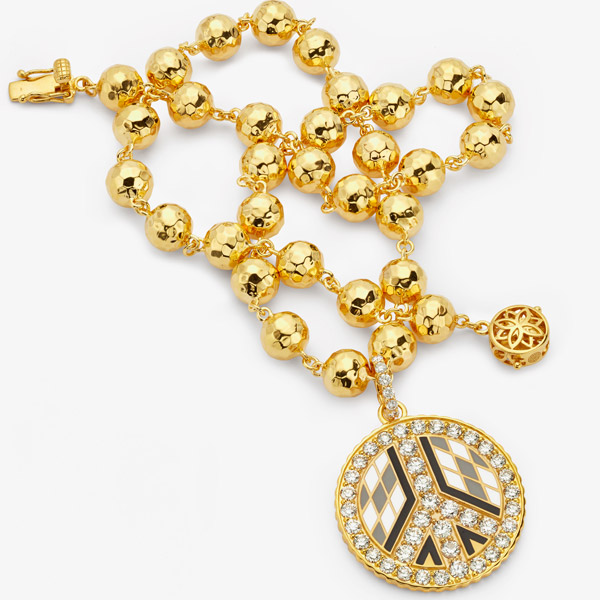
Talisman jewelry has been reliably in demand for years, and even more so in the recent year or two. We’ve talked about the evil eye, hamsa hand, lucky charms, and even scarabs as of late.
The iconic symbol that is the topic du jour isn’t so much a talisman worn for protection—rather, it’s donned to offer a statement. It’s the peace sign.
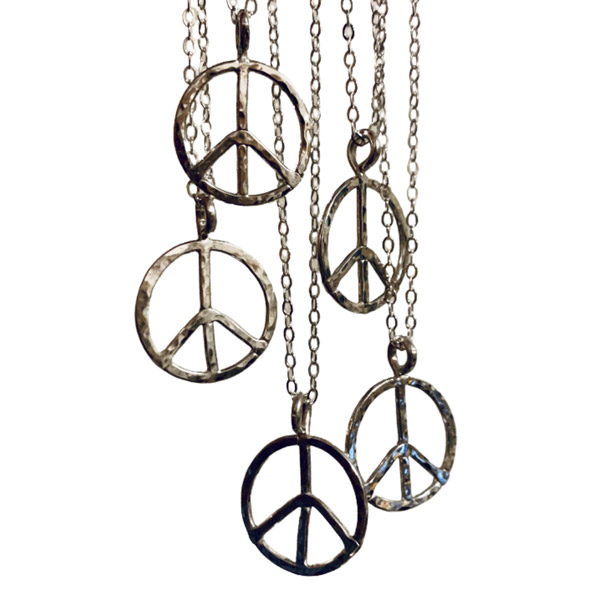
We typically associate the peace sign with 1960s fashion, an era of colorful clothes, hair bands, and bell-bottoms. But the sign was created for the British Campaign for Nuclear Disarmament in 1958 by artist Gerald Holtom, who incorporated the flag semaphore signals for N (for nuclear) and D (for disarmament) into the design.
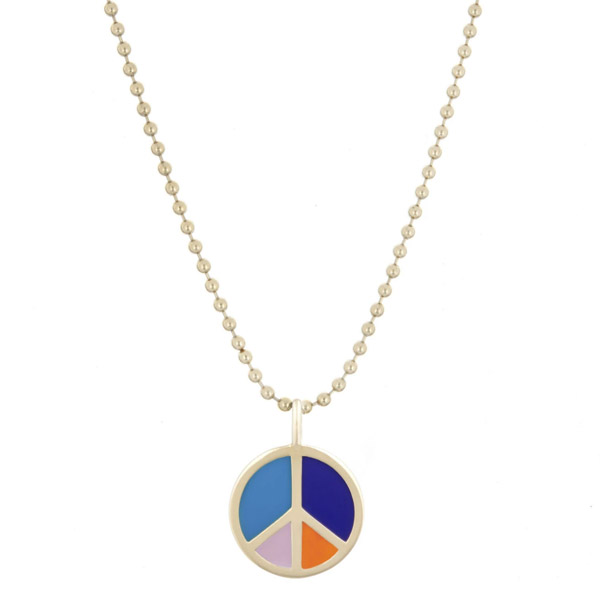
The symbol took off, as we’ve seen, becoming popular with the hippie movement in the United States and eventually evolving into the staple of pop culture that it is today. Its fluidity allows it to serve as a representation for a range of causes, all of which are centered on the idea of peace and harmony.
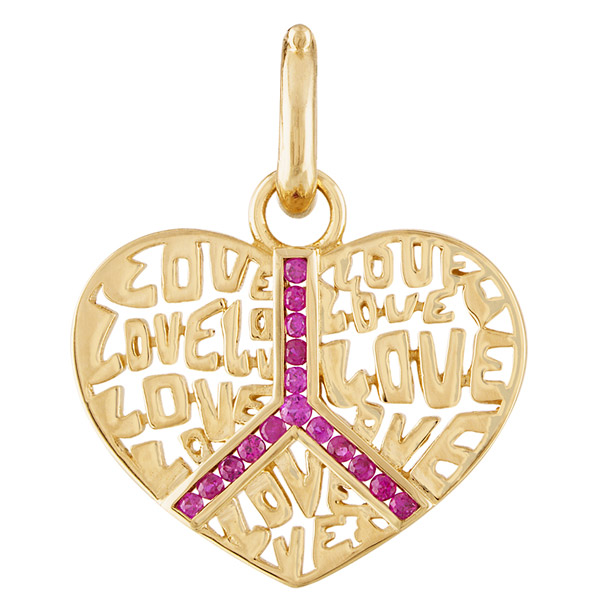
In fashion, it’s not uncommon for peace signs to be used as accents on clothing for all ages. Prints on T-shirts and dresses, adornments on handbags—the symbol is almost a given in some ways, such a mainstay that it doesn’t really factor as the main component of any one style. We’re as used to seeing it as we are, say, hearts.
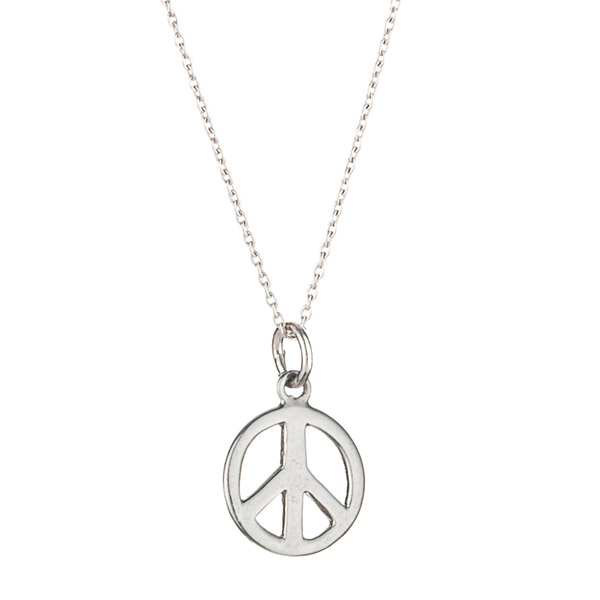
The same can be said for jewelry: It isn’t often that a peace sign stands out as a “major” or “statement” piece. This is not a bad thing—in fact, it makes the symbol indispensable. It plays beautifully with charm collections, layered necklaces, and groups of earrings. It’s a welcome sight in any jewelry party, one that brings good tidings but also a bit of fun-loving personality, though why that is I’m not exactly sure. Perhaps it’s the free-spirited vibes of ’60s and ’70s fashion, or the cuteness that the ’90s gave the icon—though make no mistake, the peace sign carries vast importance and stands as a symbol for countless causes.
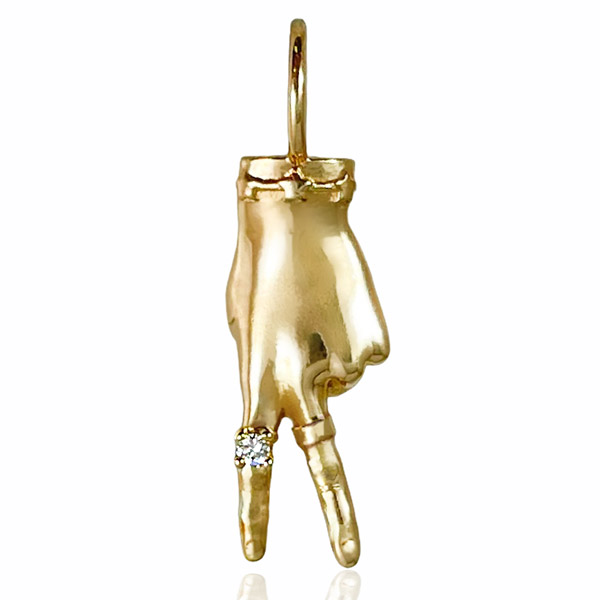
Where the sign does tend to get more stand-alone notice is in finger form: two digits held up in a symbol of peace, as opposed to the round token first introduced. The two aren’t interchangeable exactly, though they do serve to mean the same thing. Called the Victory Sign in emoji speak, the gesture was introduced in 1941 as part of a campaign by the Allies of World War II (and famously flashed by Winston Churchill) before being widely adopted by the same 1960s movement mentioned previously.
It’s that same sign that people more recently have used in photographs—a practice that originated in Japan in the 1960s (you can read about the history in Time here) before becoming popular in other Asian countries and eventually, though not as prominently, in the United States. Because of its association with fun memories documented in photographs, it’s natural that such a symbol would come off as playful and happy, and perhaps even a bit cheeky, especially when used in jewelry.
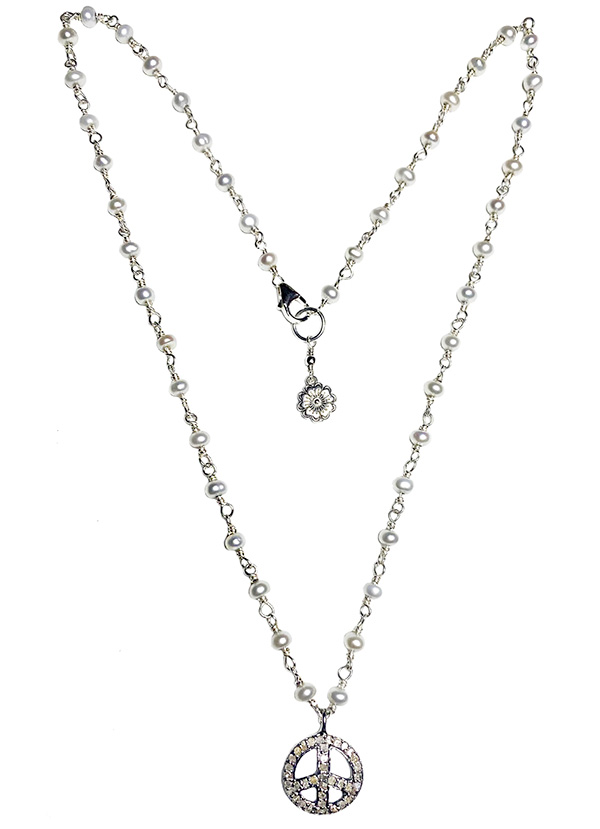
Is the peace sign, in either form, “trending”? Not particularly—but it’s certainly no less important than any other talisman we’ve enjoyed as of late. As consumers continue to add to their charm bracelet and personalized pendant collections, it feels wholeheartedly necessary to have a range of peace sign options in stock.
Though current events and recurring themes in society will continuously ensure the symbol’s relevance, the peace sign can have important meaning to an individual, too. From peace in a relationship or family to inner peace and peace with one’s choices and path, it’s a sentiment we can all embody in some way or another.
Top: Peace sign pendant in 20k yellow gold with enamel and diamonds, $11,700; hammered ball chain in 20k yellow gold, $12,600; Buddha Mama
- Subscribe to the JCK News Daily
- Subscribe to the JCK Special Report
- Follow JCK on Instagram: @jckmagazine
- Follow JCK on X: @jckmagazine
- Follow JCK on Facebook: @jckmagazine






